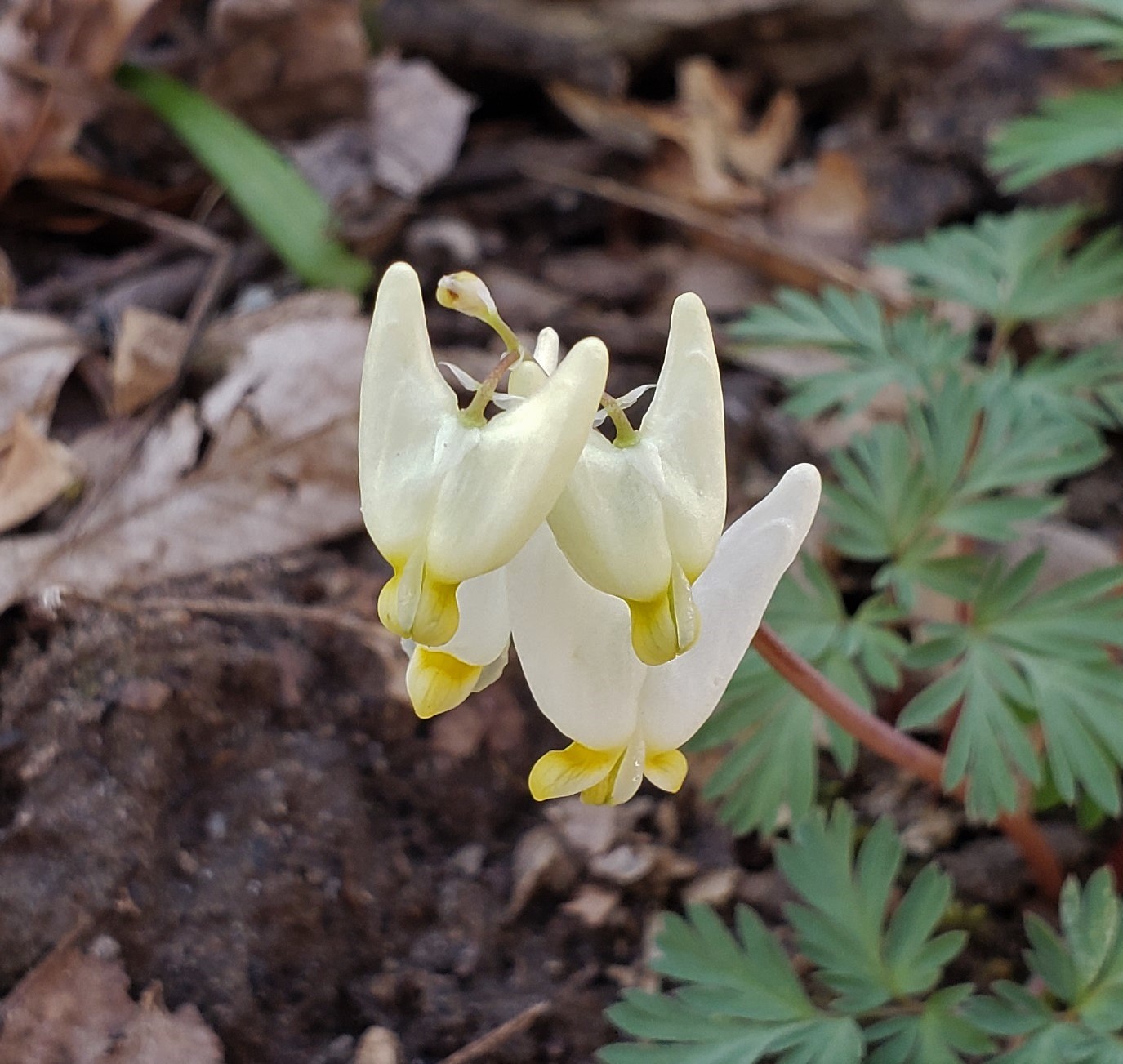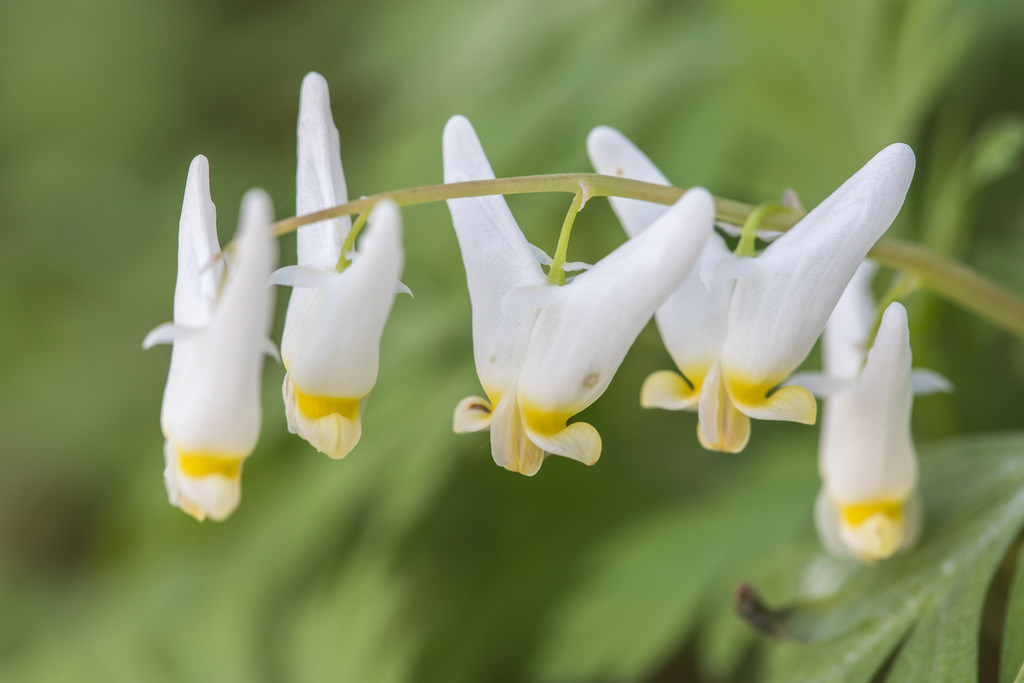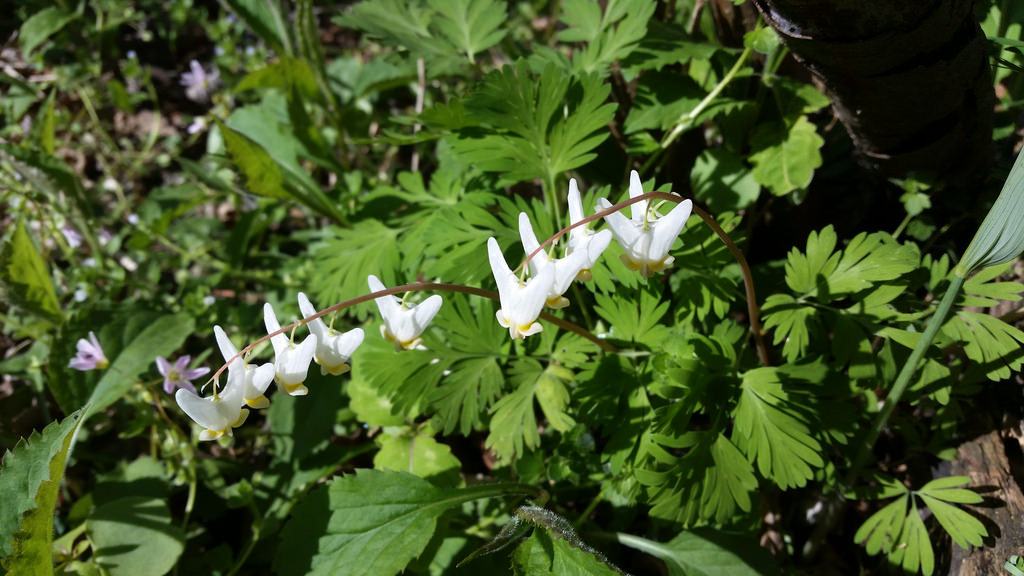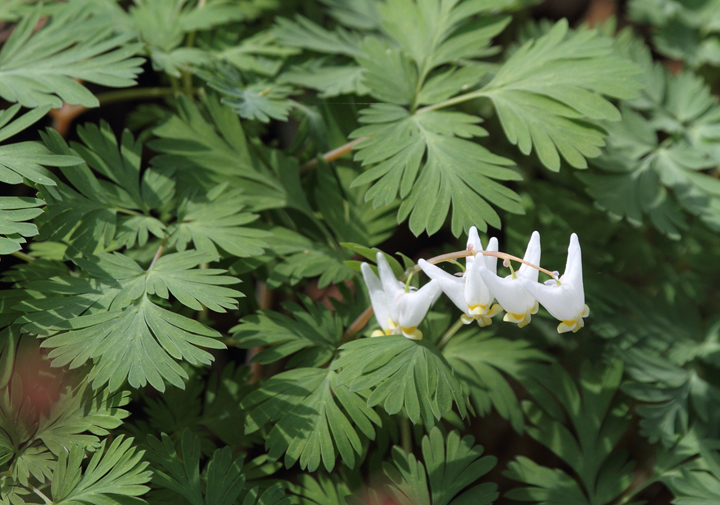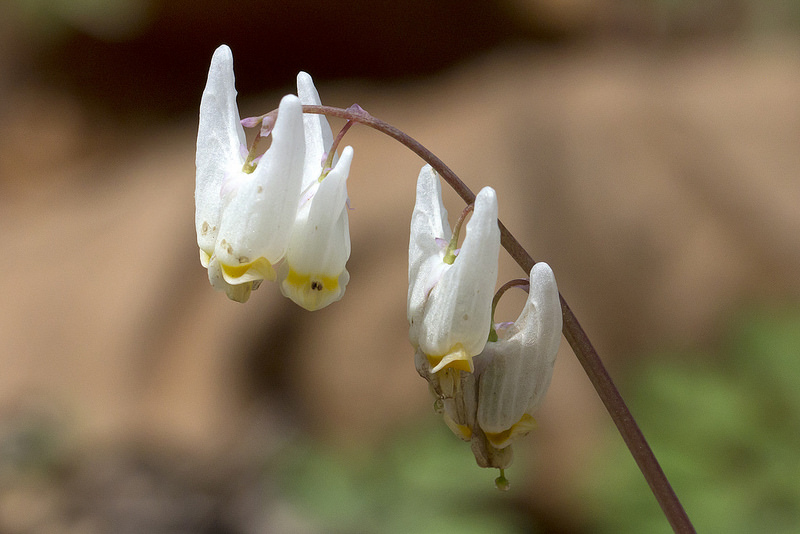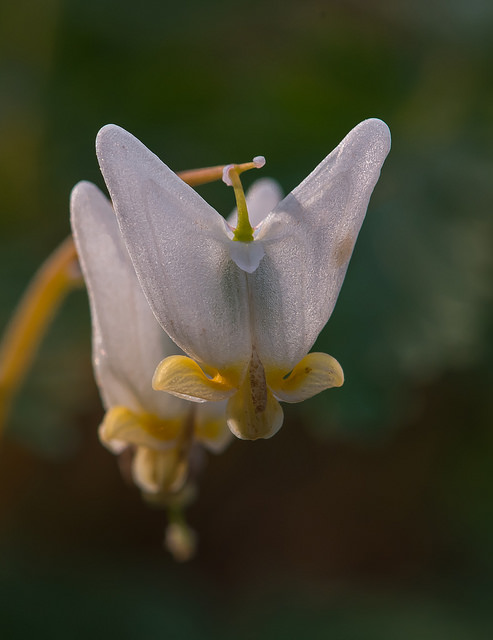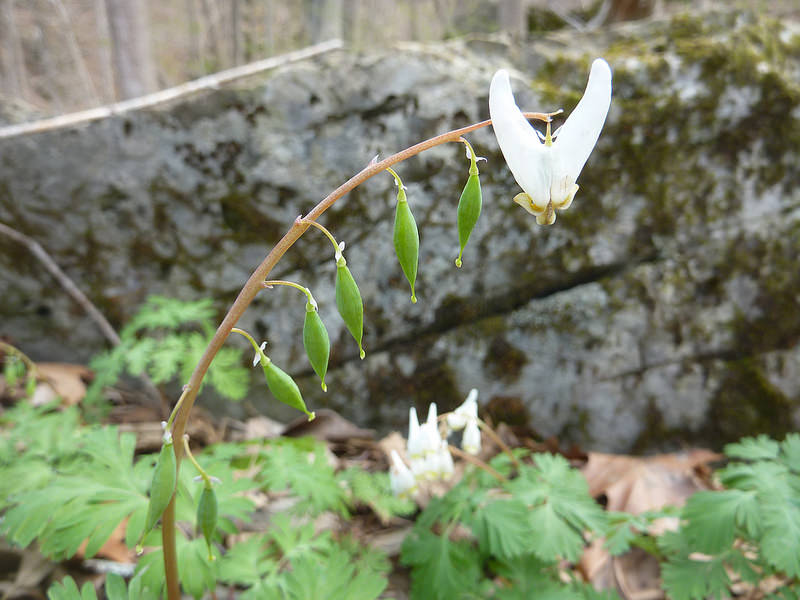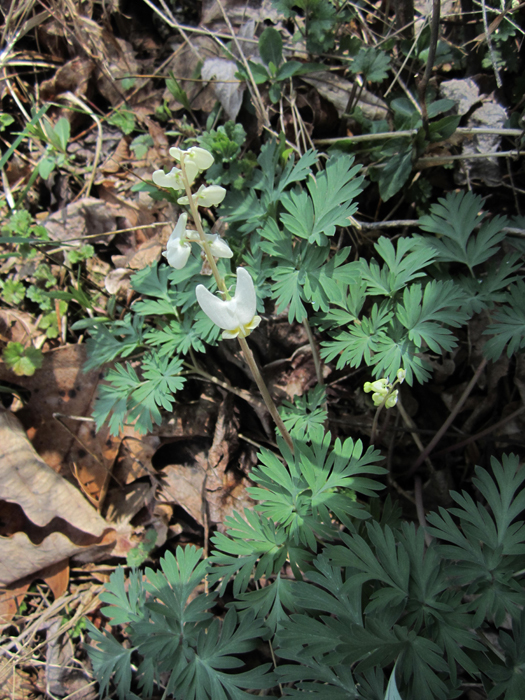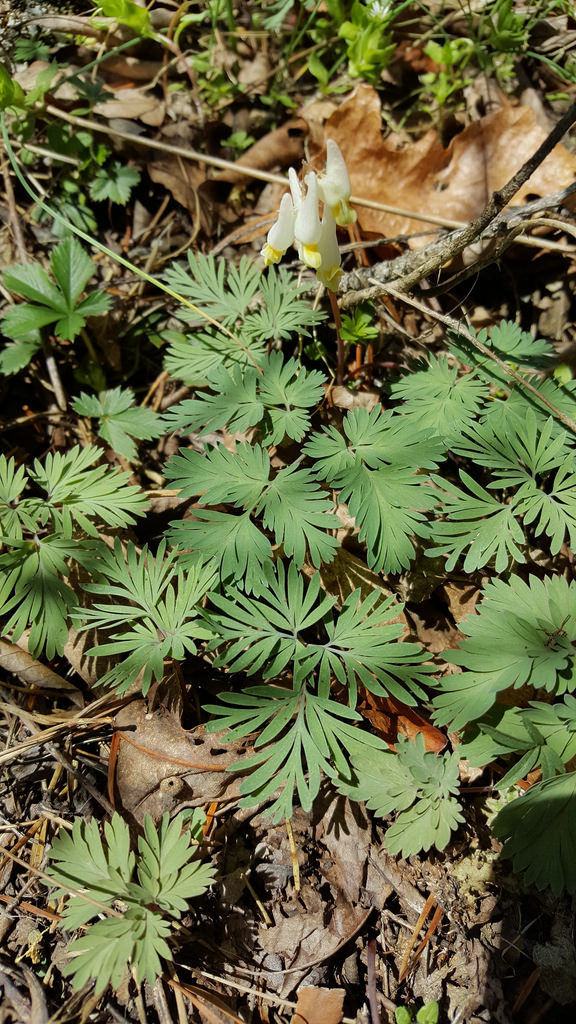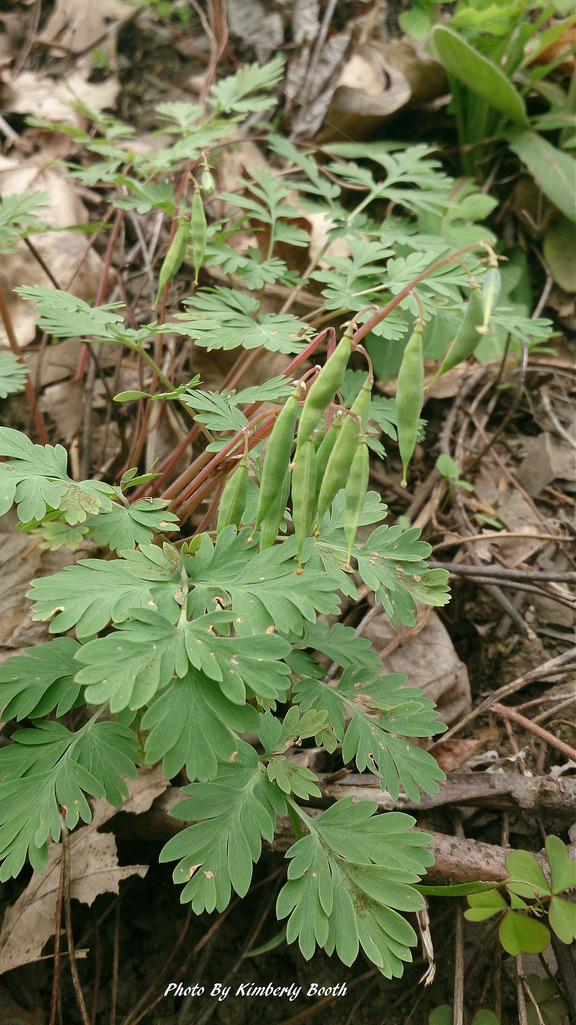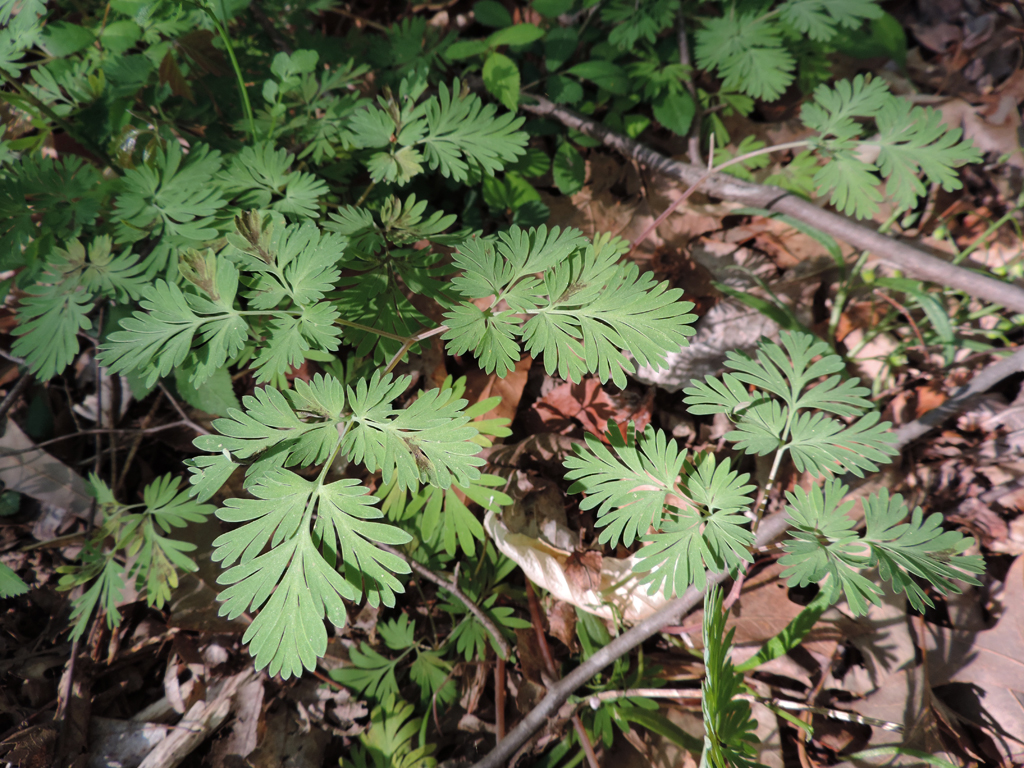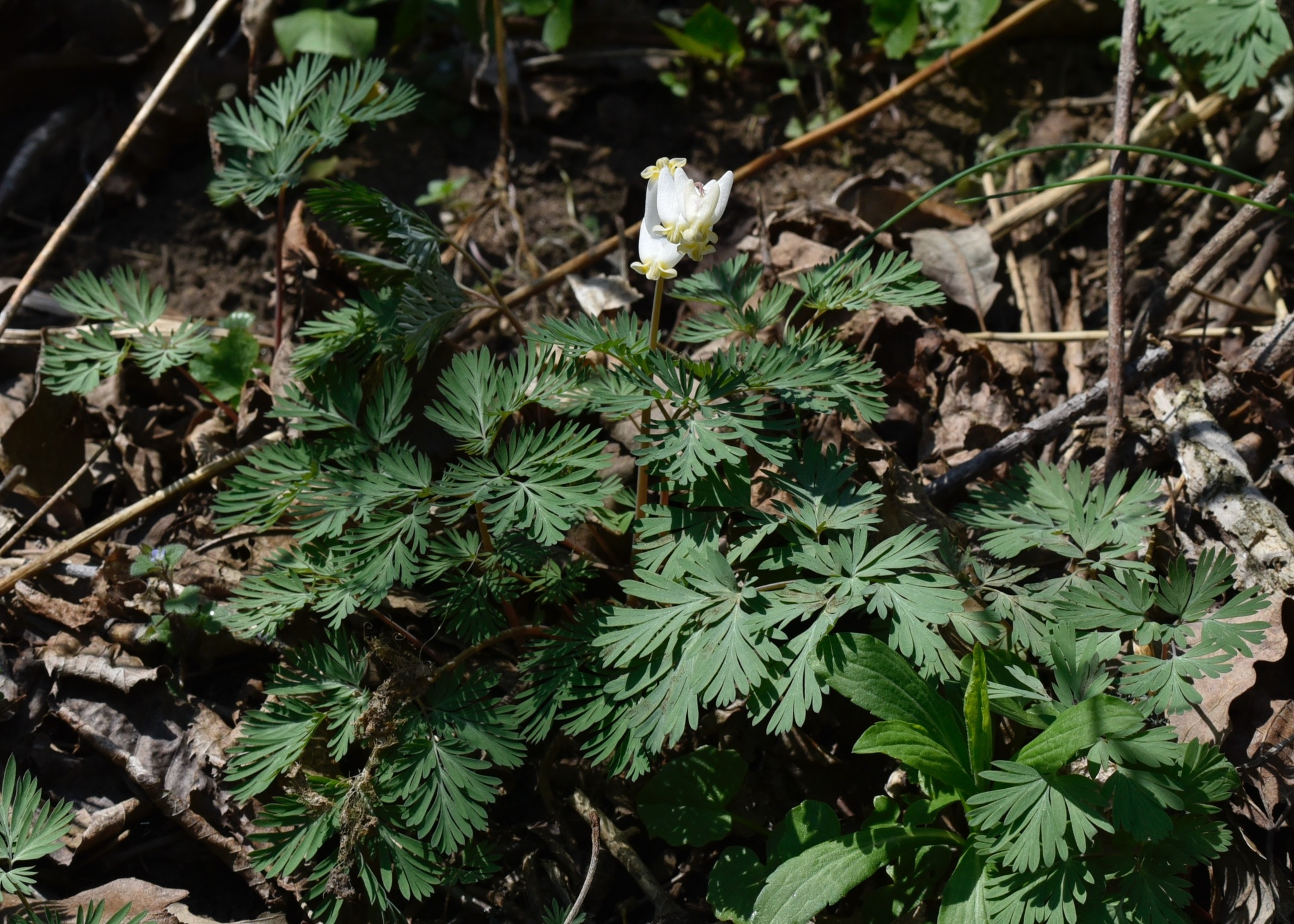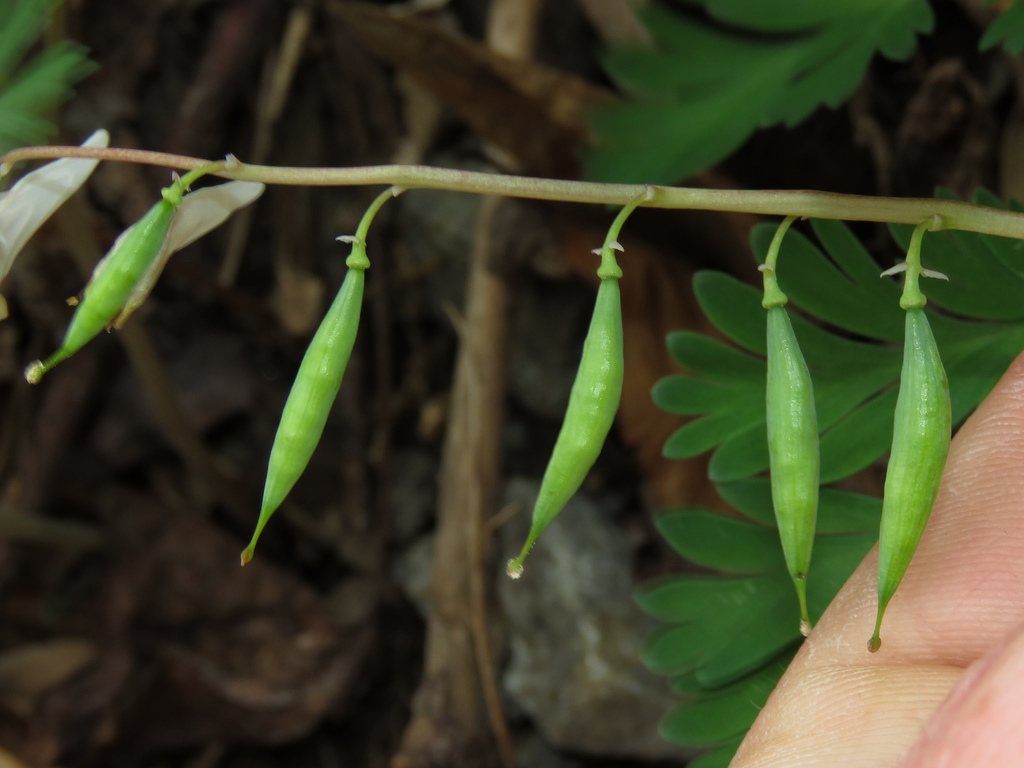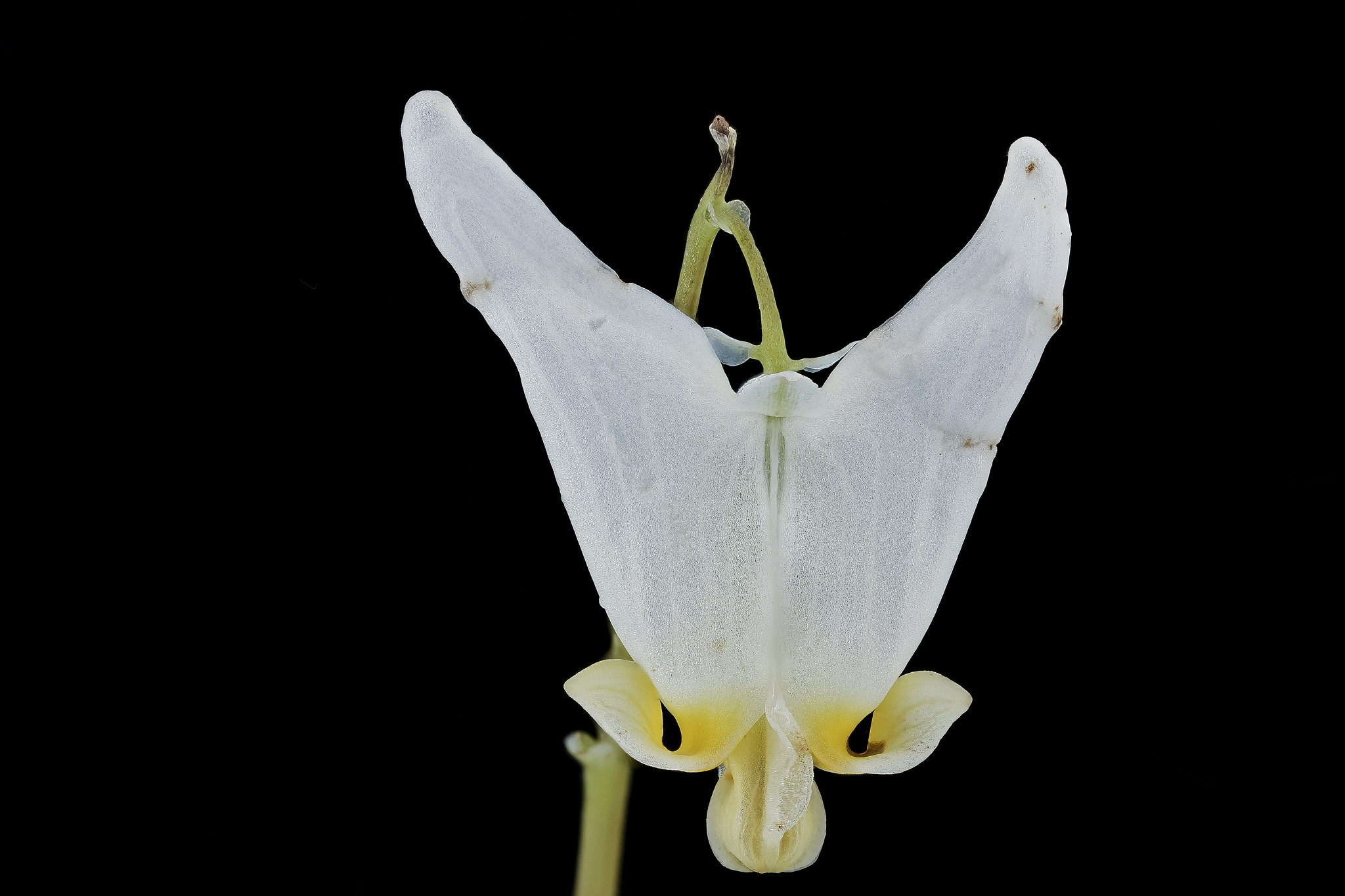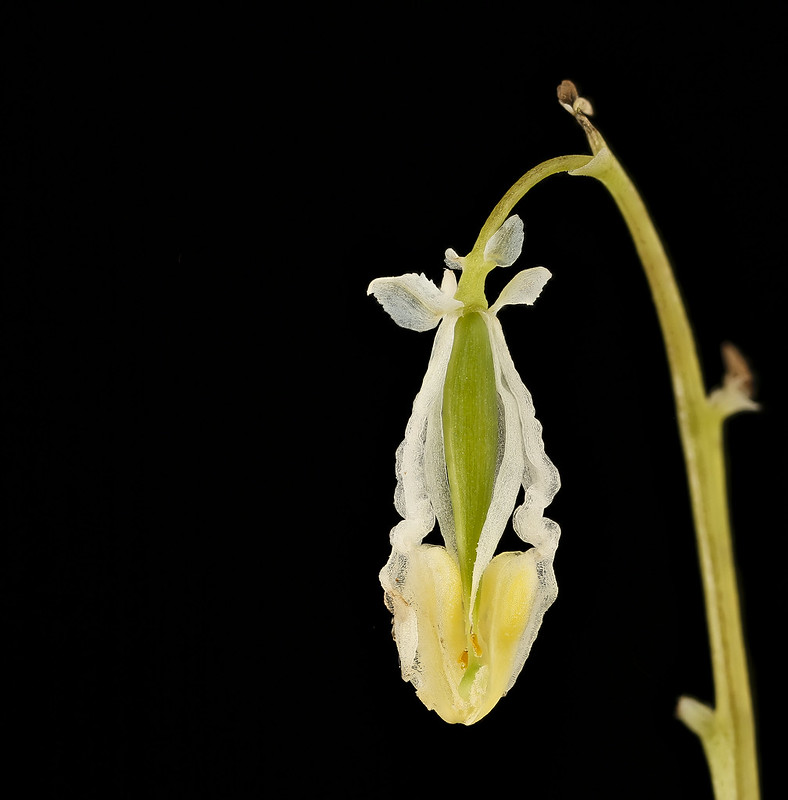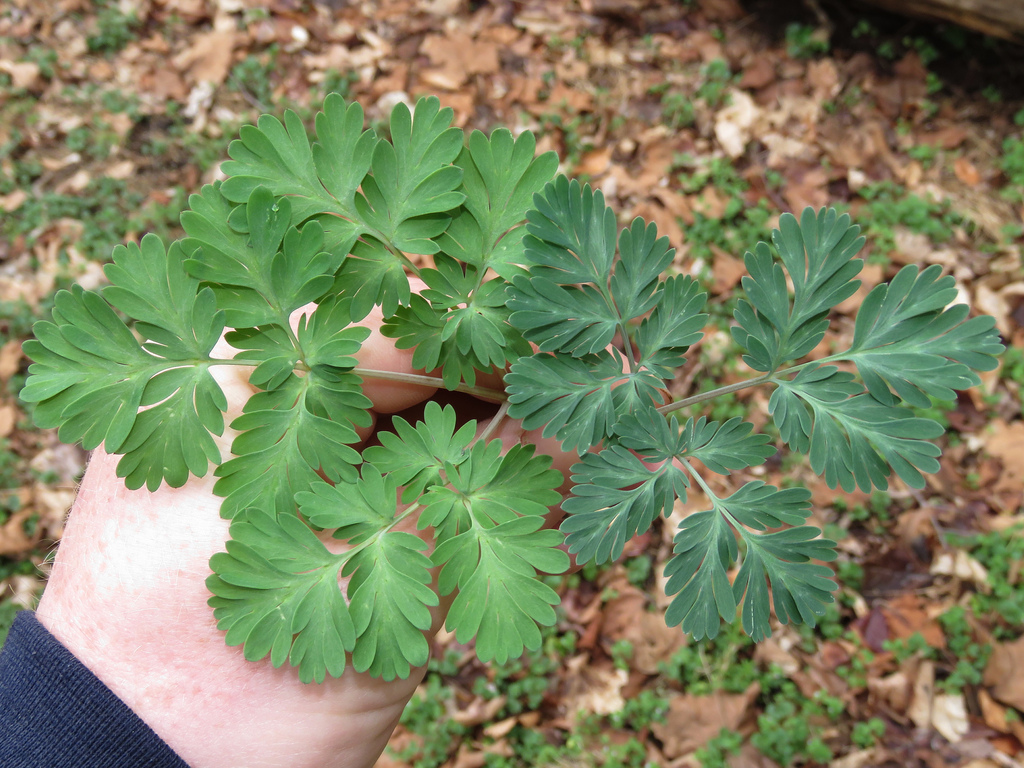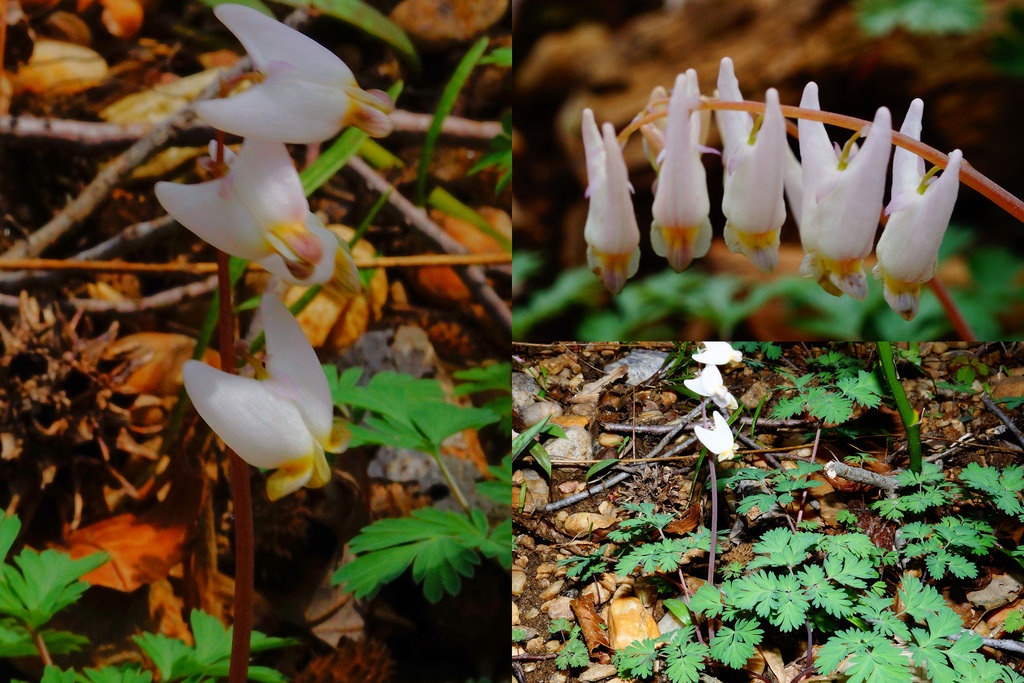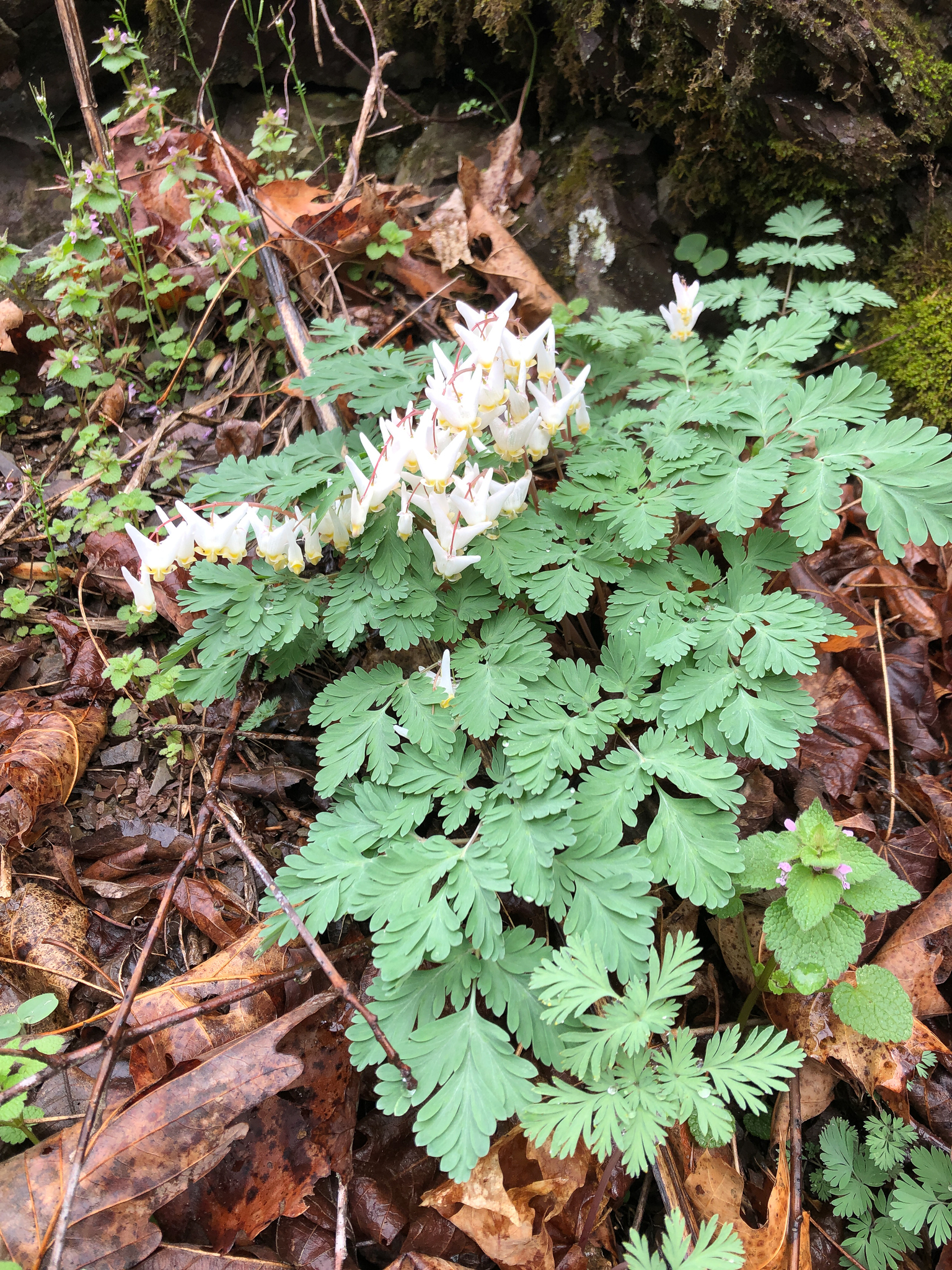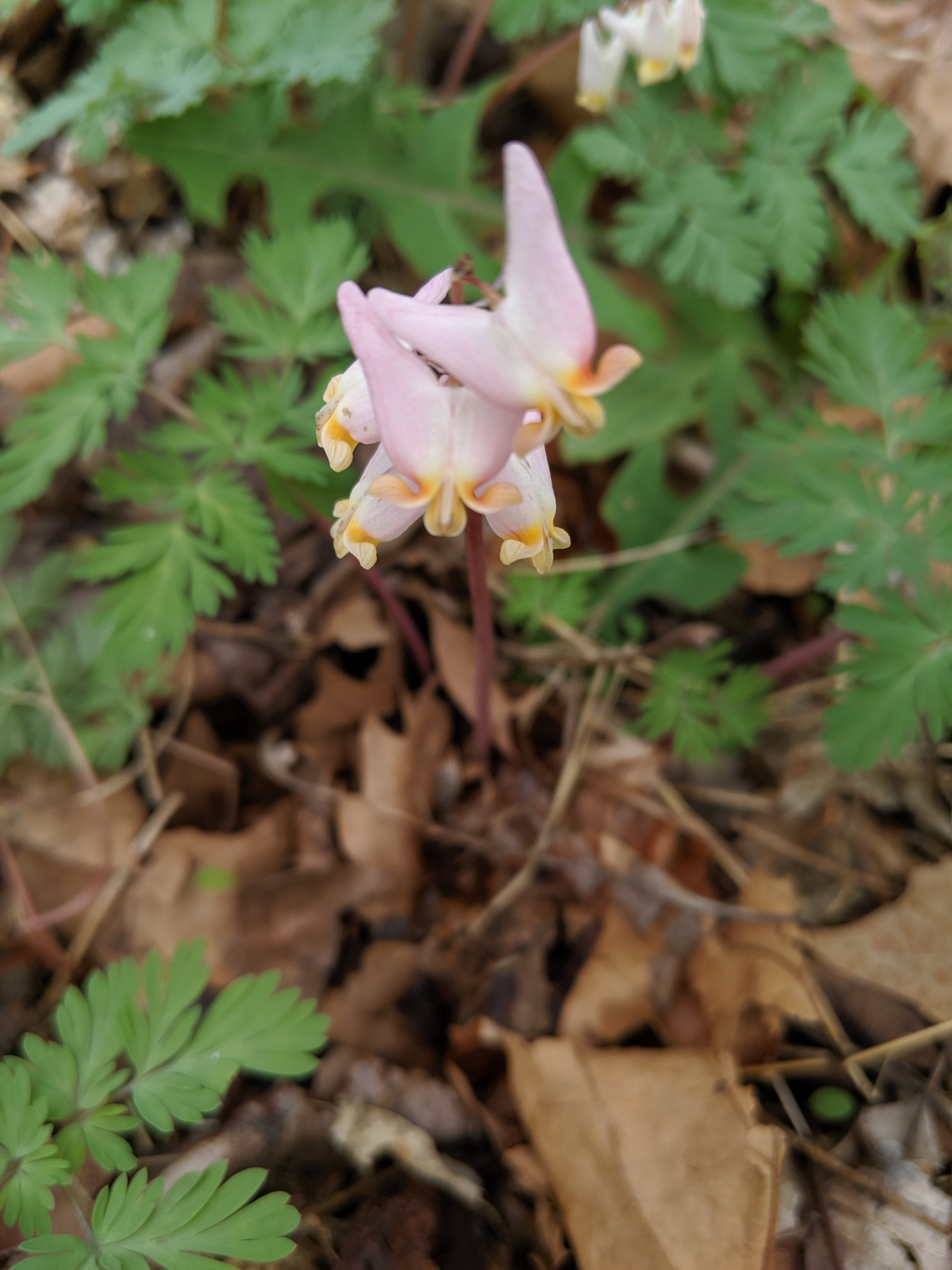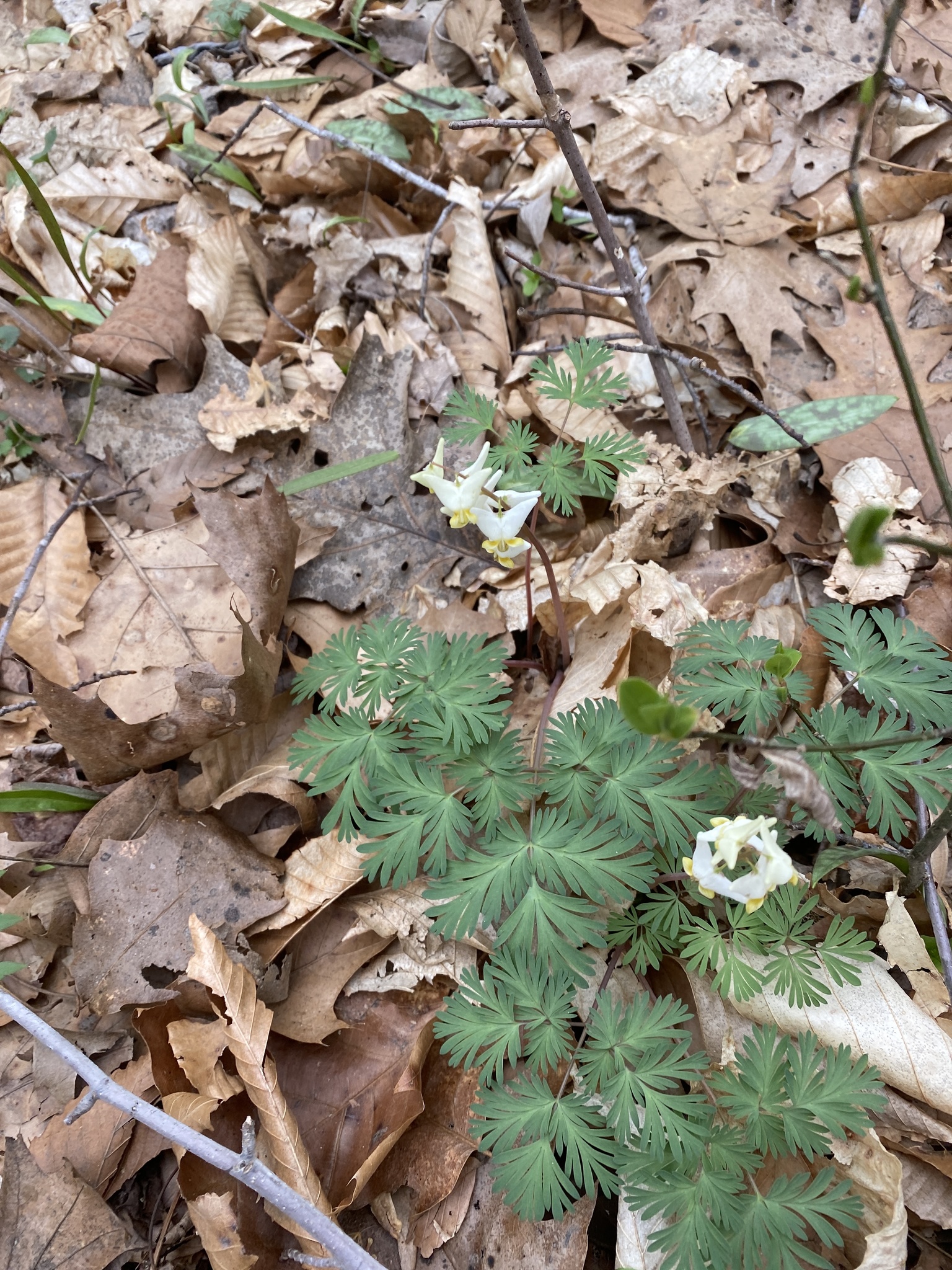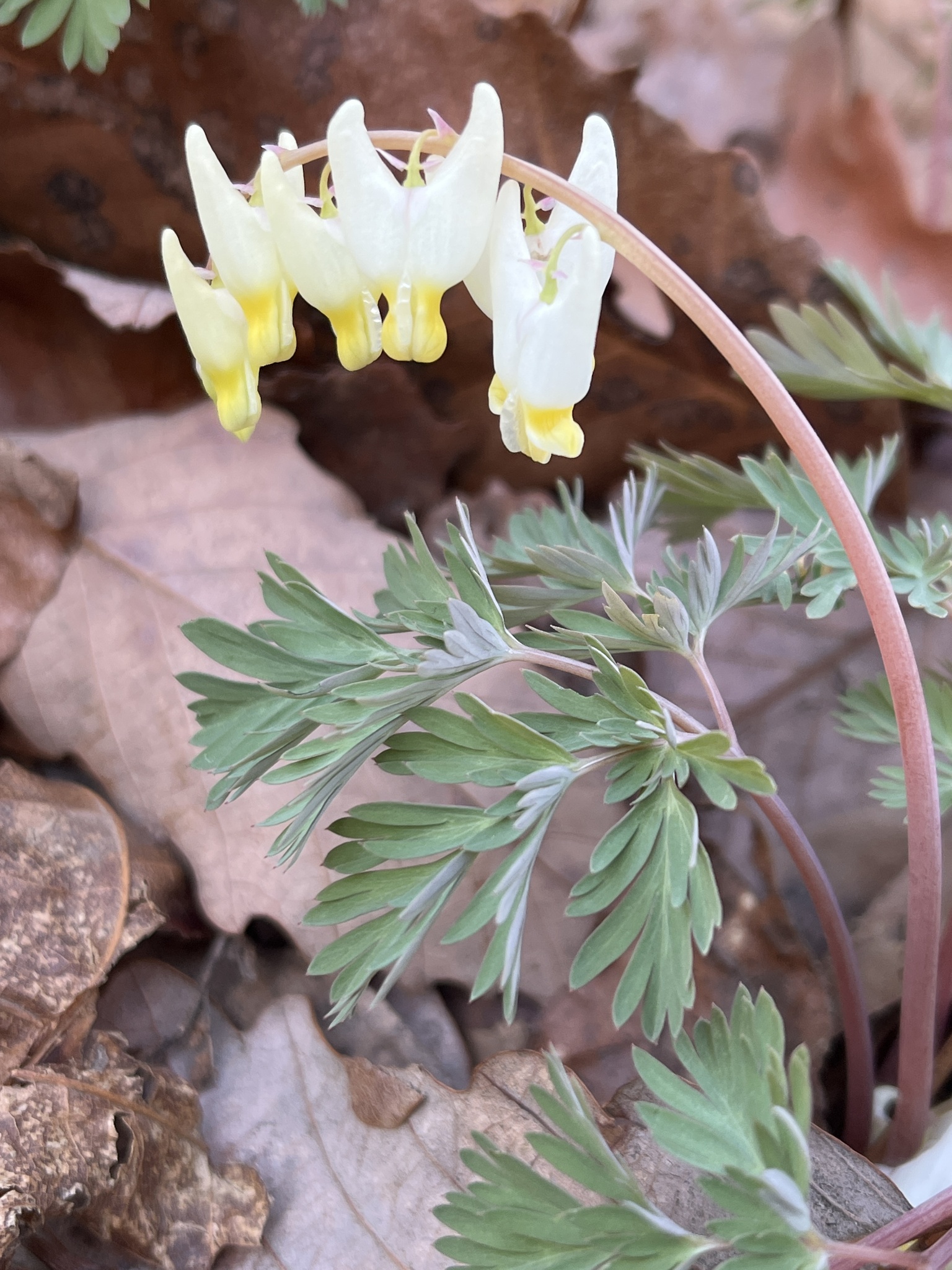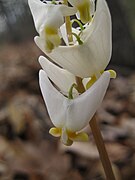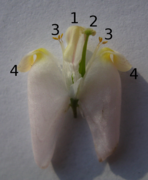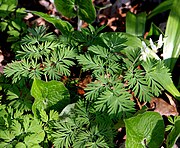Map Snapshot

















738 Records
Status
Dutchman’s Breeches is a perennial plant that occurs in much of eastern North America and parts of the Midwest. Interestingly, there is a disjunct population in the Pacific Northwest (J. Hill/MNPS).
Description
Dutchman’s Breeches grows from short, bulblet-bearing rhizomes. It is closely related, and similar in appearance, to Squirrel Corn. The flowers of both species have two pairs of petals. The outer pair form nectar spurs, which are long and spreading in Dutchman’s Breeches, giving the flower a pantaloon-like look (and are more rounded and heart-shaped in Squirrel Corn). In both species, the two inner petals, which are much smaller than the outer ones, form the base of the flower. The leaves can be difficult to tell apart unless seen side by side: Both are compound, with finely divided leaflets, somewhat resembling a fern. Squirrel Corn leaves often have a more bluish tinge than Dutchman’s leaves.
Where To Find
Dutchman’s Breeches is a spring ephemeral of rich floodplain and cove forests in our region.
Relationships
The flowers of Dutchman’s Breeches (and Squirrel Corn) are pollinated mainly by early bees that have tongues long enough to reach into the spurs for nectar.
The seeds of both species are distributed by ants, which are attracted to fleshy or oily seed appendages called elaiosomes. Ants carry the seeds to their nests and eat the elaiosomes, leaving the seeds intact.
The foliage of both plants is toxic to herbivorous mammals, such as deer, and is infrequently eaten by them (J. Hill/MNPS). This may partly explain why Dutchman’s Breeches and Squirrel Corn can remain abundant in places where some other herbs have become uncommon due to deer browse.
Seasonality Snapshot
Source: Wikipedia
| Dicentra cucullaria | |
|---|---|
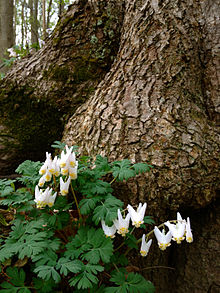
| |
| Scientific classification | |
| Kingdom: | Plantae |
| Clade: | Tracheophytes |
| Clade: | Angiosperms |
| Clade: | Eudicots |
| Order: | Ranunculales |
| Family: | Papaveraceae |
| Genus: | Dicentra |
| Species: | D. cucullaria
|
| Binomial name | |
| Dicentra cucullaria | |

| |
| Natural range in North America | |
Dicentra cucullaria, Dutchman's britches, or Dutchman's breeches, is a perennial herbaceous plant, native to rich woods of eastern North America, with a disjunct population in the Columbia Basin.[2]
The common name Dutchman's breeches derives from their white flowers that look like white breeches.
Description
[edit]The rootstock is a cluster of small pink to white teardrop-shaped bulblets (more precisely, miniature tubers). Leaves are 10–36 cm (4–14+1⁄4 in) long and 4–18 cm (1+1⁄2–7 in) broad, with a petiole (leaf stalk) 5–24 cm (2–9+1⁄2 in) long. They are trifoliate, with finely divided leaflets.[3][4][5]
The flowers are usually white, rarely suffused with pink, 1–2 cm (1⁄2–3⁄4 in) long. They are produced in early spring in racemes of 3 to 14 flowers on peduncles (flower stalks) 12–25 cm (4+3⁄4–9+3⁄4 in) long. Unlike the closely related Dicentra canadensis (squirrel corn), the flowers lack fragrance.[3]
The pistil of a pollinated flower develops into a slender pod 7–16 mm (1⁄4–5⁄8 in) long and 3–5 mm (1⁄8–3⁄16 in), narrowed to a point on both ends. The capsule splits in half when the seeds are ripe. The seeds are kidney-shaped, with a faint netlike pattern. Each one has a fleshy organ called an elaiosome[3] that attracts ants. Dutchman's breeches is one of many plants whose seeds are spread by ants, a process called myrmecochory. The ants take the seeds to their nest, where they eat the elaiosomes, and put the seeds in their nest debris, where they are protected until they germinate. They also get the added bonus of growing in a medium made richer by the ant nest debris.
The leaves and flower stems die back in late spring after the seed has ripened, and the bulblets remain dormant through the summer. In the fall, starch in the bulblets is converted to sugar, and the beginnings of the next spring's leaves and flowers develop below ground.[3]
The western populations have sometimes been separated as Dicentra occidentalis on the basis of often somewhat coarser growth, but do not differ from many eastern plants in the Blue Ridge Mountains of Virginia.[3]
Ecology
[edit]Dicentra cucullaria is dependent on bumblebees (especially Bombus bimaculatus, a common eastern North American species) for cross-pollination. In fact, the flower structure and mechanism by which it is pollinated indicate that it is adapted for bumblebees, which can separate the outer and inner petals of the flower.[2] They will then use their front legs to expose the stigma, stamen, and anthers.[2] Shortly afterwards, they will sweep pollen in a forward stroke by utilizing their middle legs, before leaving the flower to return to the colony with the pollen.[6] In this way, D. cucullaria is pollinated as the bees move from plant to plant, and the bumblebee meets its dietary needs.[6]
When consumed by livestock the effect of psychoactive compounds apomorphine, protoberberine, and protopine, found in all parts of the plant, has led ranchers to refer to it as 'Staggerweed'.[7]
Cultivation
[edit]Dutchman's breeches was likely introduced to cultivation in England when Philip Miller introduced it to the Chelsea Physic Garden. Miller likely received it from John Bartram. The species was, however, not mentioned in American horticultural literature until the early 19th century.[4]
Two clones with pink flowers have received cultivar names: 'Pittsburg', which turns pink under certain conditions, and 'Pink Punk', collected by Henrik Zetterlund on Saddle Mountain in Oregon, is more consistently pink.[4]
Dicentra cucullaria grows best in rich, woodland soil, with lots of organic matter. It prefers moist to average soil and grows best in shade, partial shade or filtered sunlight.
Medicinal uses
[edit]Native Americans and early white practitioners considered this plant useful for syphilis, skin conditions and as a blood purifier. Dutchman's breeches contains several isoquinoline-type alkaloids that may have effects on the brain and heart.[8]
However, D. cucullaria may be toxic and causes contact dermatitis in some people.[citation needed]
References
[edit]- ^ Kartesz, J.T. 1994. A synonymized checklist of the vascular flora of the United States, Canada, and Greenland. 2nd edition. 2 vols. Timber Press, Portland, OR. Southern Appalachian Species Viability Project. 2002. A partnership between the U.S. Forest Service-Region 8, Natural Heritage Programs in the Southeast, NatureServe, and independent scientists to develop and review data on 1300+ regionally and locally rare species in the Southern Appalachian and Alabama region. Database (Access 97) provided to the U.S. Forest Service by NatureServe, Durham, North Carolina.
- ^ a b c Macior, Lazarus Walter (1970-01-01). "The Pollination Ecology of Dicentra cucullaria". American Journal of Botany. 57 (1): 6–11. doi:10.2307/2440374. JSTOR 2440374.
- ^ a b c d e Stern, Kingsley R. (1997). "Dicentra cucullaria". In Flora of North America Editorial Committee (ed.). Flora of North America North of Mexico (FNA). Vol. 3. New York and Oxford: Oxford University Press – via eFloras.org, Missouri Botanical Garden, St. Louis, MO & Harvard University Herbaria, Cambridge, MA.
- ^ a b c Tebbitt, Mark C.; Lidén, Magnus; Zetterlund, Henrik (2008-01-01). Bleeding Hearts, Corydalis, and Their Relatives. Timber Press. pp. 60–61. ISBN 9780881928822.
- ^ Missouri Plants
- ^ a b MacIor, Lazarus Walter (1967). "Pollen-Foraging Behavior of Bombus in Relation to Pollination of Nototribic Flowers". American Journal of Botany. 54 (3): 359–364. doi:10.1002/j.1537-2197.1967.tb06930.x. JSTOR 2440764.
- ^ Fagan, Damian (2019). Wildflowers of Oregon: A Field Guide to Over 400 Wildflowers, Trees, and Shrubs of the Coast, Cascades, and High Desert. Guilford, CT: FalconGuides. p. 67. ISBN 978-1-4930-3633-2. OCLC 1073035766.
- ^ Oehme, F. W. (1978). "Effects of Poisonous Plants on Livestock". THE HAZARD OF PLANT TOXICITIES TO THE HUMAN POPULATION. Elsevier. pp. 67–80. doi:10.1016/B978-0-12-403250-7.50014-5. ISBN 978-0-12-403250-7.
